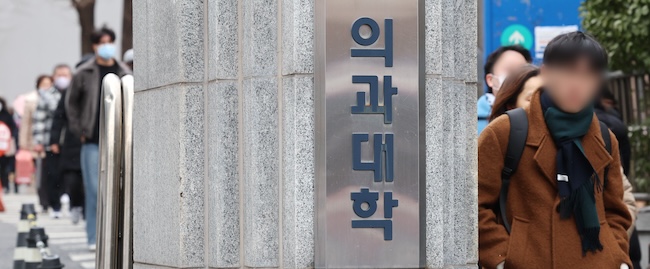
This photo shows the entrance sign of a medical school in Seoul on Feb. 5, 2024. (Image courtesy of Yonhap)
SEJONG, Feb. 6 (Korea Bizwire) — The health ministry is set to announce a plan to increase the number of medical students Tuesday, in a bid to address the chronic shortages of doctors in rural areas and the essential health care field, officials said.
The Ministry of Health and Welfare plans to hold a health care policy meeting later in the day, which will include decisions on the extent of the expansion, according to health officials.
The country has been grappling with a shortage of doctors in crucial areas, as medical professionals tend to prefer practicing in nonessential areas with lower risks. In contrast, the demand for emergency care has surged in the wake of the aging population.
Enrollment in medical schools, initially at 3,507 in the early 2000s, had experienced a gradual decline, reaching 3,058 in 2006. This reduction was attributed to government efforts to address the concerns of doctors protesting the policy of separating the prescribing and dispensing of drugs.
The government’s efforts to increase the number of doctors later gained momentum in the wake of the COVID-19 pandemic.
On the previous day, the Korean Intern Resident Association said that its poll of around 10,000 doctors showed that 88.2 percent of the respondents will carry out collective actions, including strikes, should the government proceed with raising the medical school quota.
According to the data compiled by the Organization for Economic Cooperation and Development (OECD), the number of doctors for every 1,000 people came to 2.6 in South Korea, far below the member countries’ average of 3.7.
Separate research conducted by the Korea Institute for Health and Social Affairs showed that on average, South Koreans spent 4.3 minutes during their primary meeting with doctors, compared with the OECD members’ average of 16.4 minutes.
The health ministry anticipates the country to experience a shortage of 15,000 doctors in 2035.
(Yonhap)






